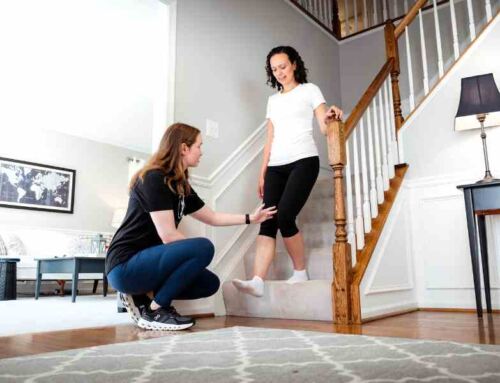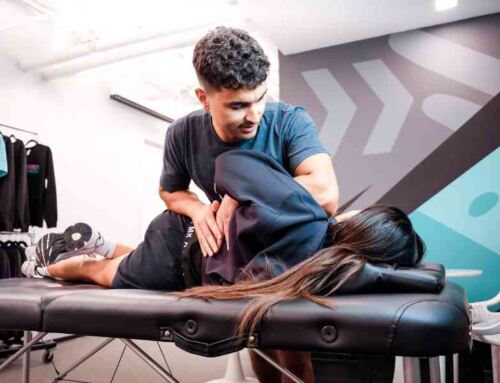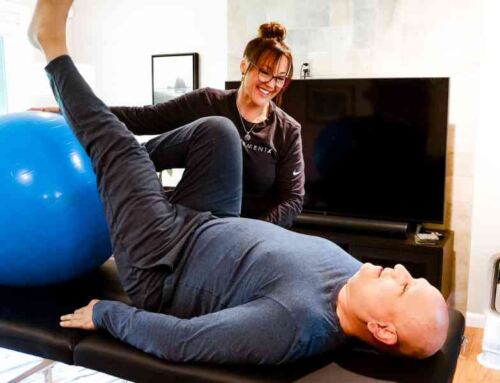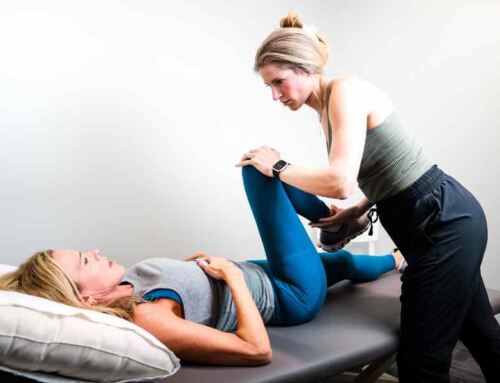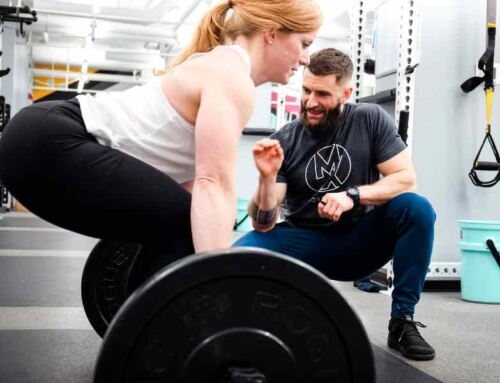If you’re a woman in your 40s or 50s who’s found yourself wincing while standing up from a chair, eyeing the stairs like they’re Mount Everest, or skipping workouts because your knees sound like microwave popcorn, this is for you.
As a physical therapist who has helped hundreds of women in your shoes, I can tell you: Knee pain does NOT just limit mobility. It steals joy, confidence, and independence. But fortunately, there is a light at the end of this tunnel, and it starts with understanding what is really happening.
What Is Actually Going On?
Knee pain in women aged 40 to 55 years old is incredibly common, and it’s rarely “just age”. More often, your knee pain can be attributed to a mix of:
- Weakness Patterns: The muscles supporting the hips and knees weaken with reduced activity and loading to the joints, leading to pain, as the muscles are no longer able to meet the demands placed on them.
- Hormonal Changes: Estrogen reduction in pre-menopause and menopause alters joint lubrication and muscle recovery, increasing joint stiffness and muscle soreness.
- Osteoarthritis: Thinning cartilage and inflammation can make the knee stiff and achy. Pain is typically worse with activity and at the end of the day.
Influence On Daily Life
Because the human body is so adaptable, it often carves out ways for us to maintain what we like to do. It wants to keep moving.
However, these compensations build up. Typical movement patterns are essential because they place the appropriate muscles in position to work when they are supposed to. When we start altering our movement to accommodate for pain, we put our bodies in a vulnerable position, forcing certain muscles to handle demands that they are not structurally made to withstand. Before you know it, what was once slight modifications, turn into significant life alterations due to pain in multiple locations. This may present as:
- Turning down a walk with friends because you know your knees will ache.
- Not attending religious obligations because of pain or inability to kneel.
- Avoiding stairs, hikes, and even squatting to pick up your grandkids.
What starts off as small hesitations and rain checks turns into real lifestyle changes. Before you know it, you’re moving less… and that actually makes the pain worse.
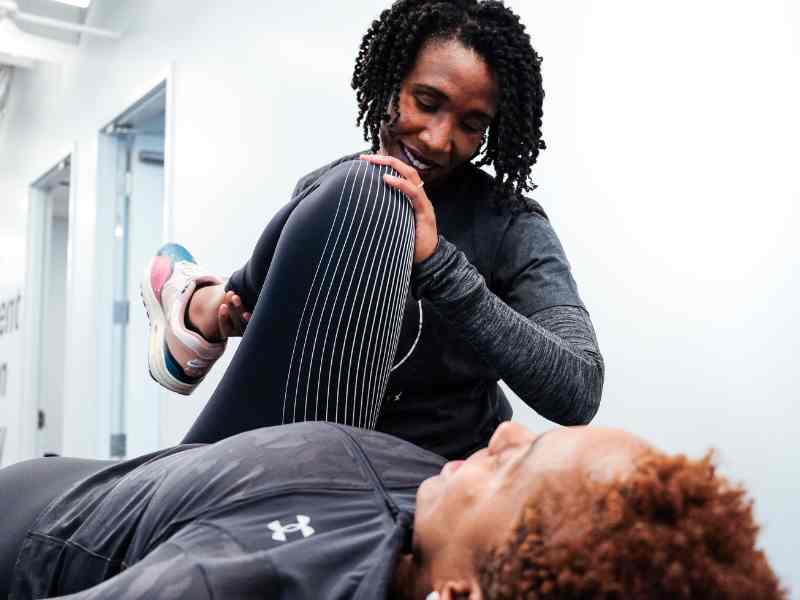
A Quick Anatomy Lesson: What’s Happening In The Knee
Your knee is a hinge joint connecting the thigh bone (femur) to your shin bone (tibia). It relies on muscles, tendons, ligaments, and cartilage for both structural and dynamic support and movement production.
Dysfunction to just one of these structures can lead to debilitating function at the knee, which is amplified if the surrounding muscles cannot accommodate for whatever demands daily life calls upon.
Additionally, structures such as cartilage rely on loading for nutrient transport and delivery, as well as stimulation for tissue repair and maintenance. In other words, the less you move, the weaker and stiffer things get, and the more the pain revolving door continues.
Pain With Movement ≠ No Movement
As my physical therapy professor so eloquently put it, “Motion is lotion.”
When we move, our joints produce a lubricant called synovial fluid which coats and nourishes cartilage. Movement also strengthens stabilizing musculature which protects joints, improves circulation, reduces inflammation, and reduces pain sensitivity.
So when your knee hurts, the answer isn’t no movement, but rather the right movement.
Self-Assessment: What Kind of Knee Pain Do You Have?
Here are some quick tests to get more specific on the types of knee pain that you can do from home:
Patellar Grind Test
In long-sitting position, place the webspace of your hand on the top of the same sided knee cap (ie. Left hand to left knee cap). Contract your quad like you’re trying to lift your leg, while applying a slight inferior and downward pressure to the kneecap. Pain with movement or inability to complete? Possible patellofemoral pain.
Stair Test
Does going up stairs hurt? This hints at possible quad weakness or patellar tracking dysfunction. If going down stairs hurts, it suggests possible arthritis, cartilage wear, or quad weakness.
Thessaly’s Test
Using your hands on the countertop for support, stand on one leg with knee bent about 20º.
With your leg still planted, gently rotate hips as far as they can go—to the right and left—3 times. If you get pain along the joint line during your rotations, it may be a meniscal dysfunction.
Action Steps: What You Can Try at Home
These exercises help strengthen and retrain muscles that are essential for getting your knees back on the same page with the rest of your body.
Quick Disclaimer: These exercises are solely for information and educational purposes. Always consult with your doctor or movement specialist prior to trying any new exercises.
Quad Sets (3 x 15 reps daily)
- Sit or lie down with your legs straight
- Tighten your thigh muscles by pressing the back of your knee into the floor.
- Relax and repeat
Hint: If you’re having a hard time, roll up a small towel/washcloth to use as a tactile cue.
Glute Bridges (3 x 12 reps daily)
- Lie on your back with your knees bent
- Lift your hips off of the ground as high as you can
- Pause for 1 second
- Control your hips back down to the ground with a slow descent
Lateral Step-Downs (3 x 10 reps, per leg)
- Using a low step or decently sized textbook/phonebook, put your entire foot on top of the step, parallel to edge.
- Slowly step up and extend the knee that is now bent (one leg should now be floating above floor).
- Slowly bend stance knee, lowering opposite heel to floor without shifting your weight between legs
- Return to the up-position.
- Continue to tap heel to ground
Hint: This exercise should mimic a single leg squat
Clamshells (3 x 12 reps)
- Lie on your side with your knees bent
- Keep your feet together and lift your top knee.
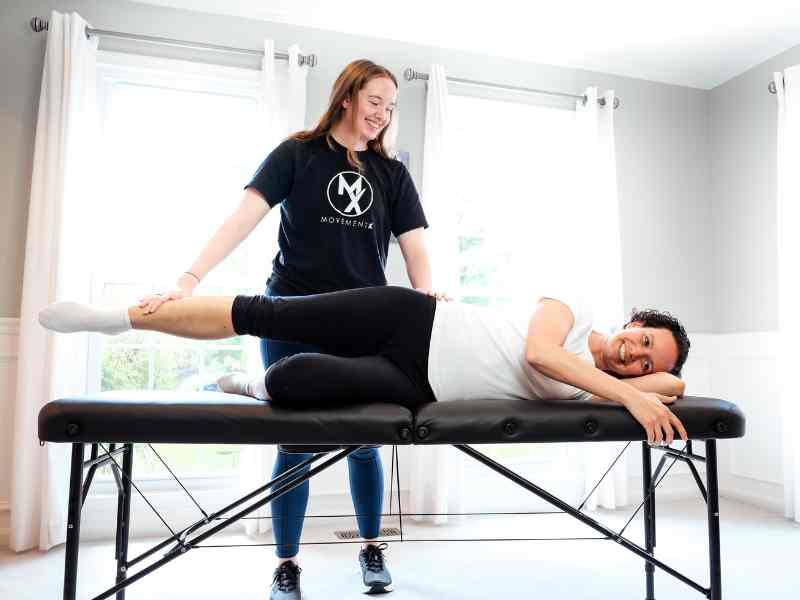
Do’s and Don’ts for Managing Knee Pain
✅ Do
- Move daily, even if it’s a short walk
- Use heat for stiffness, ice for soreness
- Keep up with your normal recreational activities, if possible
❌ Don’t
- Sit for long periods of time
- Ignore the pain thinking it’s normal or that there’s nothing you can do…it’s not…there is
Myths and Misconceptions
Knee pain tends to come with some common myths and misconceptions. Here are some of the most prevalent I hear in my practice:
“Rest will fix it.”
Actually, complete rest leads to weakness and stiffness. Appropriate movement heals. Keep moving, mindfully.
“It’s just arthritis, nothing I can do.”
Strength training, mobility work, and PT can dramatically reduce symptoms.
“I’ll make it worse if I move.”
The right exercises reduce pain and help cartilage stay healthy.
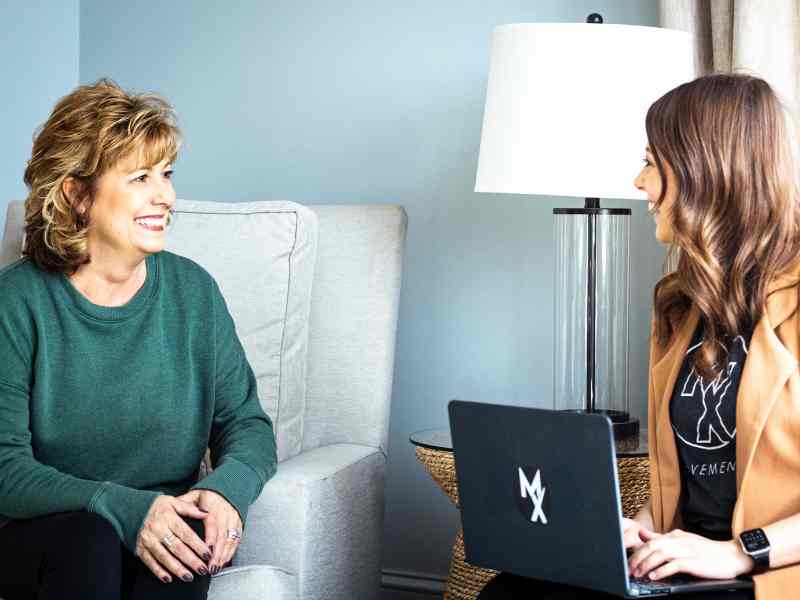
How Physical Therapists Can Help You
On top of your own assessment and research from home, a licensed physical therapist can both speed up and deepen your understanding and healing process. Physical therapists:
Help You Find Out the “Why”
A lot of the time, pain in the knee is not coming from the knee. Sure, you may have had a lingering knee injury from 20+ years ago, or been nursing pain for the past couple months, but why did that start?
PTs are mobility investigators. We examine how you move, where your strengths and weaknesses lie, and why your knees have been snap, crackle, popping, and use all that information to form a plan for how to get you to achieve your goals.
Help You Create a Personalized Plan
Cookie cutter plans are boring, and not optimal! YouTube is great for generic exercises and I’m sure your Instagram physical therapist has been great, but it is important to have your plan custom tailored to you!
Your plan should be specialized to your body, goals, and lifestyle. These are your knees, and your life. When it comes to your health, don’t settle for “just okay”.
Help You Get Back To Your Life
On behalf of all PTs, our purpose is not to teach you how to manage your pain…our goal is to help you conquer it! Physical therapy keeps you on the move, independent, and doing the things that you love to do for years to come.
The Bottom Line
Don’t let grumpy knees be the reason you have to put your life on pause. You deserve to move with confidence.
If you’ve been sitting out because of knee pain, hear this:
You are not broken. Your situation can improve.
Your body is itching to find a way to get back to its former self, sometimes it just needs a little help. Physical therapy isn’t just about exercises and stretching… it’s about getting you back to living a life where your only thoughts are “I can’t wait to do this again.”
If your knees are holding you back, let’s fix that together. Schedule a movement assessment or send me a message. I’m here to help you get back to doing what you love, pain-free.
References
- Cleveland Clinic. (n.d.). Patellofemoral pain syndrome (PFPS): Symptoms & treatment. Cleveland Clinic. Retrieved November 6, 2025, from https://my.clevelandclinic.org/health/diseases/17914-patellofemoral-pain-syndrome-pfp
- Johns Hopkins Medicine. (n.d.). Patellofemoral pain syndrome (runner’s knee). Johns Hopkins Medicine. Retrieved November 6, 2025, from https://www.hopkinsmedicine.org/health/conditions-and-diseases/patellofemoral-pain-syndrome-runners-knee
- Mayo Clinic. (2023). Patellofemoral pain syndrome – Symptoms and causes. Mayo Clinic. Retrieved November 6, 2025, from https://www.mayoclinic.org/diseases-conditions/patellofemoral-pain-syndrome/symptoms-causes/syc-20350792
- Medical News Today. (2023, July 12). Menopause joint pain: Causes and treatment. Medical News Today. Retrieved November 6, 2025, from https://www.medicalnewstoday.com/articles/menopause-and-joint-pain
- Scripps Health. (2024, November 12). What causes early knee osteoarthritis? Scripps Health. Retrieved November 6, 2025, from https://www.scripps.org/news_items/6539-who-is-at-risk-of-early-knee-osteoarthritis
- Blyth M, Anthony I, Francq B, et al. Background. NIHR Journals Library; 2015. https://www.ncbi.nlm.nih.gov/books/NBK310281/
- Cleveland Clinic. Patellar Grind Test/Clarke’s Sign for Patellofemoral Pain. Cleveland Clinic. Published February 14, 2022. https://my.clevelandclinic.org/health/diagnostics/22428-patellar-grind-test
- Verywell Health. (2021, December 14). Early-onset osteoarthritis: Symptoms, causes, and more. Verywell Health. Retrieved November 6, 2025, from https://www.verywellhealth.com/early-onset-osteoarthritis-symptoms-causes-and-more-5205512
- WebMD. (2024, November 20). Physical therapy for your knee: Exercises, strength training, TENS, and more. WebMD. Retrieved November 6, 2025, from https://www.webmd.com/pain-management/knee-pain/rehab-strengthen-knees
- Women’s Health Network. (n.d.). Arthritis in your 40s? It’s not uncommon. Women’s Health Network. Retrieved November 6, 2025, from https://www.womenshealthnetwork.com/joint-health/arthritis-symptoms-in-your-40s-what-to-do
- Cleveland Clinic. (2022). Sarcopenia (muscle loss): Symptoms & causes. Cleveland Clinic. Retrieved November 6, 2025, from https://my.clevelandclinic.org/health/diseases/23167-sarcopenia
About the Author
Doctor Sidney Otiwu is a physical therapist based in Atlanta, GA. Born and raised in the metro-Atlanta area, Sidney treats patients across all body parts and conditions, with a focus on helping individuals participate in their communities, jobs, hobbies, and families. As a former Division 1 athlete, he brings a competitive drive and thorough approach to his care, meeting patients where they are both physically and mentally to help them get back to living their lives well.



